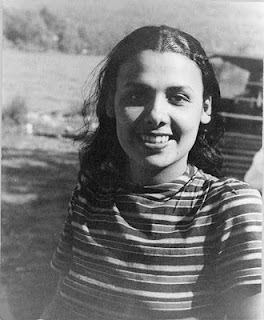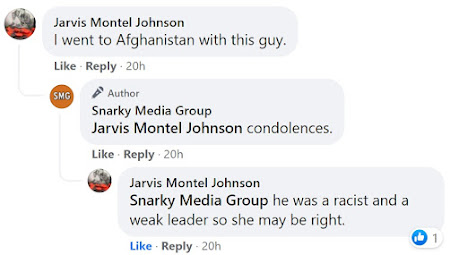Racial Caste Schemes and Formation in the United States
 |
| Late Great Lena Horne |
In 1982-83, Susie Guillory Phipps unsuccessfully sued the Louisiana Bureau of Vital Records to change her racial classification from black to white. The descendant of an eighteenth-century white planter and a black slave, Phipps was designated as "black" in her birth certificate in accordance with a 1970 state law which declared anyone with at least one-thirty-second "Negro blood" to be black. The legal battle raised intriguing questions about the concept of race, its meaning in contemporary society, and its use (and abuse) in public policy. Assistant Attorney General Ron Davis defended the law by pointing out that some type of racial classification was necessary to comply with federal record-keeping requirements and to facilitate programs for the prevention of genetic diseases. Phipp's attorney, Brian Begue, argued that the assignment of racial categories on birth certificates was unconstitutional and that the one-thirty-second designation was inaccurate. He called on a retired Tulane University professor who cited research indicating that most Louisiana whites have one-twentieth "Negro" ancestry. In the end, Phipps lost. The court upheld a state law which quantified racial identity, and in so doing affirmed the legality of assigning individuals to specific racial groupings.
The Phipps case illustrates the continuing dilemma of defining race and establishing its meaning in institutional life. Today, to assert that variations in human physiognomy are racially based is to enter a constant and intense debate. Scientific interpretations of race have not been alone in sparking heated controversy;religious perspectives have done so as well. Most centrally, of course, race has been a matter of political contention. This has been particularly true in the United States, where the concept of race has varied enormously over time without ever leaving the center stage of US history. (57)
 |
| Houma, Louisiana Pow Wow |
...
The meaning of race is defined and contested throughout society, in both collective action and personal practice. In the process, racial categories themselves are formed, transformed, destroyed and re-formed. We use the term racial formation to refer to the process by which social, economic and political forces determine the content and importance of racial categories, and by which they are in turn shaped by racial meanings.
Crucial to this formulation is the treatment of race as acentral axis of social relations which cannot be subsumed under or reduced to some broader category or conception. (61-2)
Crucial to this formulation is the treatment of race as acentral axis of social relations which cannot be subsumed under or reduced to some broader category or conception. (61-2)
...
Racialization: the historical development of race
 |
| Chief Elder Ean Lee Bordeaux Ancient West Feliciana Houma-Choctaw People |
In the United States, the racial category of "black" evolved with the consolidation of racial slavery. By the end of the seventeenth century, Africans whose specific identity was Ibo, Yoruba, Fulani, etc., were rendered "black" by an ideology of exploitation based on racial logic -- the establishment and maintenance of a "color line." This of course did not occur overnight. A period of indentured servitude which was not rooted in racial logic preceded the consolidation of racial slavery. With slavery, however, a racially based understanding of society was set in motion which resulted in the shaping of a specific racial identity not only for the slaves but for the European settlers as well. Winthrop Jordan has observed: "From the initially common term Christian, at mid-century there was a marked shift towards the terms English and free. After about 1680, taking the colonies as a whole, a new term of self-identification appeared -- white."
We employ the term racialization to signify the extension of racial meaning to a previously racially unclassified relationship, social practice or group. Racialization is an ideological process, an historically specific one. Racial ideology is constructed from pre-existing conceptual (or, if one prefers, "discursive") elements and emerges from the struggles of competing political projects and ideas seeking to articulate similar elements differently. An account of racialization processes that avoids the pitfalls of US ethnic history remains to be written.
Particularly during the nineteenth century, the category of "white" was subject to challenges brought about by the influx of diverse groups who were not of the same Anglo-Saxon stock as the founding immigrants. In the nineteenth century, political and ideological struggles emerged over the classification of Southern Europeans, the Irish and the Jews, among other "non-white" categories. Nativism was only effectively curbed by the institutionalization of a racial order that drew the color line around, rather than within, Europe.
 |
| Late Great Lena Horne |
...
Racial formation: the creation of racial meanings
Much racial theory, we have argued, treats race as a manifestation or epiphenomenon of other supposedly more fundamental categories of sociopolitical identity, notably those of ethnicity, class and nation. In such accounts, race is not regarded as a continually evolving category in its own right; in fact, these approaches have often imagined that race would decline in importance, even disappear, as economic or political "progress" rendered "race-thinking" obsolete.
We hope to alter this situation by presenting the outlines of a theory of racial formation. In our view, racial meanings pervade US society, extending from the shaping of individual racial identities to the structuring of collective political action on the terrain of the state.
An approach based on the concept of racial formation should treat race in the United States as a fundamental organizing principle of social relationships. To give this notion some concreteness, let us distinguish between the micro-level and macro-level of social relations.
At the micro-level, race is a matter of individuality, of the formation of identity. The ways in which we understand ourselves and interact with others, the structuring of our practical activity -- in work and family, as citizens and as thinkers (or "philosophers") -- these are all shaped by racial meanings and racial awareness.
At the macro-level, race is a matter of collectivity, of the formation of social structures: economic, political and cultural/ideological. ... The racial order is organized and enforced by the continuity and reciprocity between these two "levels" of social relations. The micro- and macro- levels, however, are only analytically distinct. In our lived experience, in politics, in culture, in economic life, they are continuous and reciprocal. Racial discrimination, for example -- considered as a "macro-level" set of economic, political and ideological/cultural practices -- has obvious consequences for the experience and identities of individuals. It affects racial meanings, intervenes in "personal life," is interpreted politically, etc. Another example: racial identity -- considered as a "micro-level" complex of individual practices and "consciousness" -- shapes the universe of collective action. The panoply of individual attributes -- from one's patterns of speech or tastes in food or music to the economic, spatial, familial, or citizenship "role" one occupies -- provides the essential themes for political organization, the elements of economic self-reliance, etc.
The theory of racial formation, then, suggests that racial phenomena penetrate and link these two "levels" of social relationships. But this is only part of the story; the concept of race as an organizing principle of social relations provides a description, a classification of racial phenomena in the US, and also explains the continuity of these phenomena, but it does not yet offer a conception of the process of racial formation. To grasp this process we must understand the way in which the meaning of these phenomena is politically contested.
Contesting the social meaning of race
Once we understand that race overflows the boundaries of skin color, superexploitation, social stratification, discrimination and prejudice, cultural domination and cultural resistance, state policy (or of any other particular social relationship we list), once we recognize the racial dimension present to some degree in every identity, institution and social practice in the United States -- once we have done this, it becomes possible to speak of racial formation. This recognition is hard-won; there is a continuous temptation to think of race as an essence, as something fixed, concrete and objecive, as (for example) one of the categories just enumerated. And there is also an opposite temptation: to see it as a mere illusion, which an ideal social order would eliminate.
In our view it is crucial to break with these habits of thought. The effort must be made to understand race as an unstable and "decentered" complex of social meanings constantly being transformed by political struggle. It is imperative that we achieve this understanding for two reasons. First, because today as in the past racial minorities pay a heavy price in human suffering as a result of their categorization as "other" by the dominant racial ideology; this is true not only in the United States, but across the world. Second, because racial politics are emblematic, we believe, of a new stage of US politics as a whole, a new socially based politics.
The crucial task, then, is to suggest how the widely disparate circumstances of individual and group racial identities, and of the racial institutions and social practices with which these identities are intertwined, are formed and transformed over time. This takes place, we argue, through political contestation over racial meanings. Such contestation occurs today throughout American society: it takes place at the level of "personal" relationships (indeed it arises within individuals whose very identities and racial "beliefs" are necessarily contradictory); it exists in "objective" relationships such as work or political activity; and it occurs in cultural representation. (66-69)
Carl Gutierrez-JonesDepartment of English
University of California, Santa Barbara
e-mail: carlgj@humanitas.ucsb.edu
In 1977, at the age of 43, Susie Guillory Phipps applied for a passport. She hadn't needed one before, and she needed a copy of her birth certificate to obtain one. Susie Phipps went to New Orleans to obtain a copy of her birth certificate from the Division of Vital Records. The clerk took Mrs. Phipps aside and showed her that her birth certificate showed the race of both parents as "Col." - colored. Mrs. Phipps responded with disbelief, shock and later said that "she was sick for 3 days." Ms. Phipps
Susie Guillory Phipps insisted that an error had been made and wanted the birth certificate corrected. She contacted Jack Westholz Jr., state official, chief of the New Orleans section of the Office of the General Counsel of the Louisiana Department of Health and Human Resources.
This Division is the only office which is capable of correcting errors or changing a birth certificate.
Mr. Westholz asked Susie Guillory Phipps to provide the following information: Complete names of her parents; Place of birth of her brothers and sisters. After checking the records, Mr. Westholz informed
Mrs. Phipps that no errors had been made on her birth certificate.
_____________________________________________
University of California, Santa Barbara
e-mail: carlgj@humanitas.ucsb.edu
| Susie Guillory Phipps |
Susie Guillory Phipps insisted that an error had been made and wanted the birth certificate corrected. She contacted Jack Westholz Jr., state official, chief of the New Orleans section of the Office of the General Counsel of the Louisiana Department of Health and Human Resources.
This Division is the only office which is capable of correcting errors or changing a birth certificate.
Mr. Westholz asked Susie Guillory Phipps to provide the following information: Complete names of her parents; Place of birth of her brothers and sisters. After checking the records, Mr. Westholz informed
Mrs. Phipps that no errors had been made on her birth certificate.
_____________________________________________
The noxious practice of pigeonholing people in narrow racial classifications is a deeply ingrained American habit that predates independence. It began with a desire to enforce firm distinctions between free citizens and slaves. In 1661, for example, Virginia decreed that the legal status of the mother would determine whether a black child was a slave or free. Three years later, Maryland went a step further, declaring that if either of a child's parents was a slave, the child would also be. The purpose of this law, its authors said, was to deter "divers freeborn English women" from marrying black slaves. But it did nothing to deter white male slave owners from trying to expand their human holdings by impregnating black female slaves.
Eventually, these pioneering efforts at codifying racial distinctions hardened into so-called miscegenation laws, which aimed to preserve the "purity" of the white race by making interracial sex a crime. Though upholding such laws required ever more tortured legal definitions of who was black and who wasn't, 16 states continued to ban interracial marriages until 1967, when the U.S. Supreme Court struck down such laws. In what was perhaps the most ridiculous example of racial pigeonholing, Louisiana ordained that anyone with a "trace" of black ancestry would be classified as black. Then, in an ostensibly "humane" 1970 reform, it enacted the "one thirty-second rule," by which anyone with a single black great-great-great-great-grandparent and 31 white great-great-great-great-grandparents was legally black.
That regulation went unchallenged until Susie Guillory Phipps, the wife of a wealthy seafood importer who had always considered herself white, got a look at her birth certificate when applying for a passport and discovered that according to the state, she was black. In 1982 she sued the state, which hired a genealogist to delve into Phipps' ancestry. He dug up, among other ancestors, Phipps' great-great-great-great- grandmother--the black mistress of an Alabama plantation owner back in 1760--and concluded that Phipps was precisely three thirty-seconds black. The preposterous law stayed on the books until 1983.
For many decades, people on all sides of the color line chafed at these legal restraints on their ability to love and procreate. Even where black-white marriages were legal, these couples had to seek refuge in more tolerant black neighborhoods and raise their children as African Americans. But in the past 20 years, as the number of mixed-race marriages has increased dramatically, to more than 3 million by some estimates, attitudes among all racial groups have evolved. Tracey Mandell, 26, is an English instructor at Loyola Marymount University. Her partner Michael Bartley is a black man from Jamaica, and their son Noah is coming up on his first birthday. Mandell remembers last March, when she and members of her family were taking a get-acquainted tour of the maternity ward at Santa Monica Hospital. "There were about 50 couples on the tour," she says. "At least half of them were multiracial. My cousin, who lives in Minnesota, pointed it out to me. I hadn't even noticed. I think in L.A. there are so many multiracial people you don't even pay attention. But it's different when you leave Los Angeles."
Zoeller soon paid a price for saying openly what many others were thinking secretly. K Mart, the discount chain with a big African-American clientele, unceremoniously dumped him as the sponsor of a line of golf clothing and equipment, and he abjectly withdrew from the Greater Greensboro Open tournament.
If current demographic trends persist, midway through the 21st century whites will no longer make up a majority of the U.S. population. Blacks will have been overtaken as the largest minority group by Hispanics. Asians and Pacific Islanders will more than double their number of 9.3 million in 1995 to 19.6 million by 2020. An explosion of interracial, interethnic and interreligious marriages will swell the ranks of children whose mere existence makes a mockery of age-old racial categories and attitudes. Since 1970, the number of multiracial children has quadrupled to more than 2 million, according to the Bureau of the Census. The color line once drawn between blacks and whites--or more precisely between whites and nonwhites--is breaking into a polygon of dueling ethnicities, each fighting for its place in the sun.
His nickname notwithstanding, professional golfer Frank ("Fuzzy") Zoeller saw Tiger Woods quite clearly. He gazed upon the new king of professional golf, through whose veins runs the blood of four continents, and beheld neither a one-man melting pot nor even a golfing prodigy but a fried-chicken-and-collard- greens-eating Sambo. Zoeller saw Woods, in short, as just another stereotype, condemned by his blackness to the perpetual status of "little boy."
Zoeller soon paid a price for saying openly what many others were thinking secretly. K Mart, the discount chain with a big African-American clientele, unceremoniously dumped him as the sponsor of a line of golf clothing and equipment, and he abjectly withdrew from the Greater Greensboro Open tournament.
"People who know me know I'm a jokester. I just didn't deliver the line well," Zoeller tearfully explained. But his real crime was not, as he and his defenders seem to think, merely a distasteful breach of racial etiquette or an inept attempt at humor. The real crime was falling behind the times. The old black-white stereotypes are out of date, and Zoeller is just the latest casualty of America's failure to come to grips with the perplexing and rapidly evolving significance of racial identity in what is fast becoming the most polyglot society in history.
For many citizens the "browning of America" means a disorienting plunge into an uncharted sea of identity. Zoeller is far from alone in being confused about the complex tangle of genotypes and phenotypes and cultures that now undercut centuries-old verities about race and race relations in the U.S. Like many others, he hasn't got a clue about what to call the growing ranks of people like Woods who inconveniently refuse to be pigeonholed into one of the neat, oversimplified racial classifications used by government agencies--and, let's face it, most people. Are they people of color? Mixed race? Biracial? Whatever they like?




Comments
Post a Comment
You are welcome to email your tips, corrections and/or comments to: aidcommission@gmail.com please indicate if you wish to remain anonymous or otherwise. We will post your comment without edit.